- Home
- Rural Development
- Nature Trails
- Nature Trails
- Canary Islands Sector
- Órzola a Playa Blanca
Stage 1: Órzola-Haría
Description

Guarded by the impressive volcano of La Corona, Puerto de Órzola is an unparalleled place for the beginning of this stage
The first stage of the Órzola-Playa Blanca Nature Trail starts at the port of Órzola. The travellers walk away from the coast as the trail enters the Natural Monument of La Corona, where they will enjoy the extensive badlands guarded by the volcano of La Corona. The town of Máguez is the prelude to the end of the stage, located in the town of Haría and separated by the Peña de María Herrera and La Atalaya.
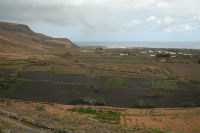
The first stage of this trail begins at the port of Órzola, from where the traveller can visit and see the island of La Graciosa. The trail then goes up La Quemadita Street, gradually leaving the port behind. Later on, at the intersection with LZ-1 road, this street also becomes a road (LZ-203). The traveller must keep going straight on this road and be cautious when crossing.
A few metres before kilometre number 1, the traveller can see a hermitage on the left, and the views of the Peñas de Andía can be admired on the right. These rocks are a part of the Archipiélago de Chinijo Natural Park. When the trail reaches kilometre number 2, there is a 420-metre stretch shared with LZ-203 road, so the traveller must walk on the left side of the road.
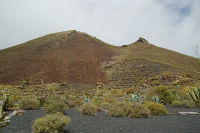
Following the signs, the traveller must take the path on the right, which goes on a stone pavement for a few metres just to go back to a wide dirt path, after several smooth bends. Having crossed a small riverbed, which is usually dry, the trail becomes a narrow path, widening again after a few metres.
At kilometre number 3, the slope becomes steeper. Once the hardest slopes have been passed, the trail goes along LZ-203 road, sharing a 398-metre stretch with it.
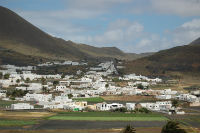
The trail turns right and goes through a wide dirt path. Then it keeps going up, entering the Natural Monument of La Corona, where the traveller will enjoy the typical badland landscape. A few metres before kilometre number 5, with a beautiful fig tree (Ficus carica) guarding the milestone, the ascent becomes harder. Past kilometre number 6, a 503-metre descending stretch shared with the road begins.
Farther ahead, the trail takes a wide dirt path on the right of the road. Along this smooth stretch, the traveller can admire the unparalleled views of the volcano from La Corona without worrying about any steep slopes. Farther on, the Órzola-Playa Blanca Nature Trail leaves the Natural Monument of La Corona.
A few metres before kilometre number 8, the traveller will see the alcogida in the slope of the mountain. This is a structure that collects rainwater so that it is then stored in the aljibe. After this milestone, there is a gentle descent leading to the town of Máguez, through Los Llanos Street, then Las Cruces Street and turning right on La Candela Street to finally leave the town through LZ-205 road.
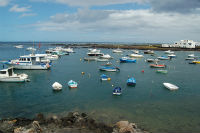
After walking 250 m on the road, the traveller must take the path on the right. Shortly ahead, this path begins to go up as, narrowing and becoming less easy to cycle. This ascent ends at kilometre number 11. At this point, the path widens and begins to descend towards the town of Haría. The trail enters this town through Molino Street and then turns left through Fajardo Street towards the church, where it turns right. The route continues through the beautiful León y Castillo Square, with a remarkable architecture, especially its well-preserved traditional balconies. The trail then goes through La Cilla Street, arriving at Constitución Square. Past the city council, the first stage of the Órzola-Playa Blanca Nature Trail comes to an end at the interpretation display panel.
Profile
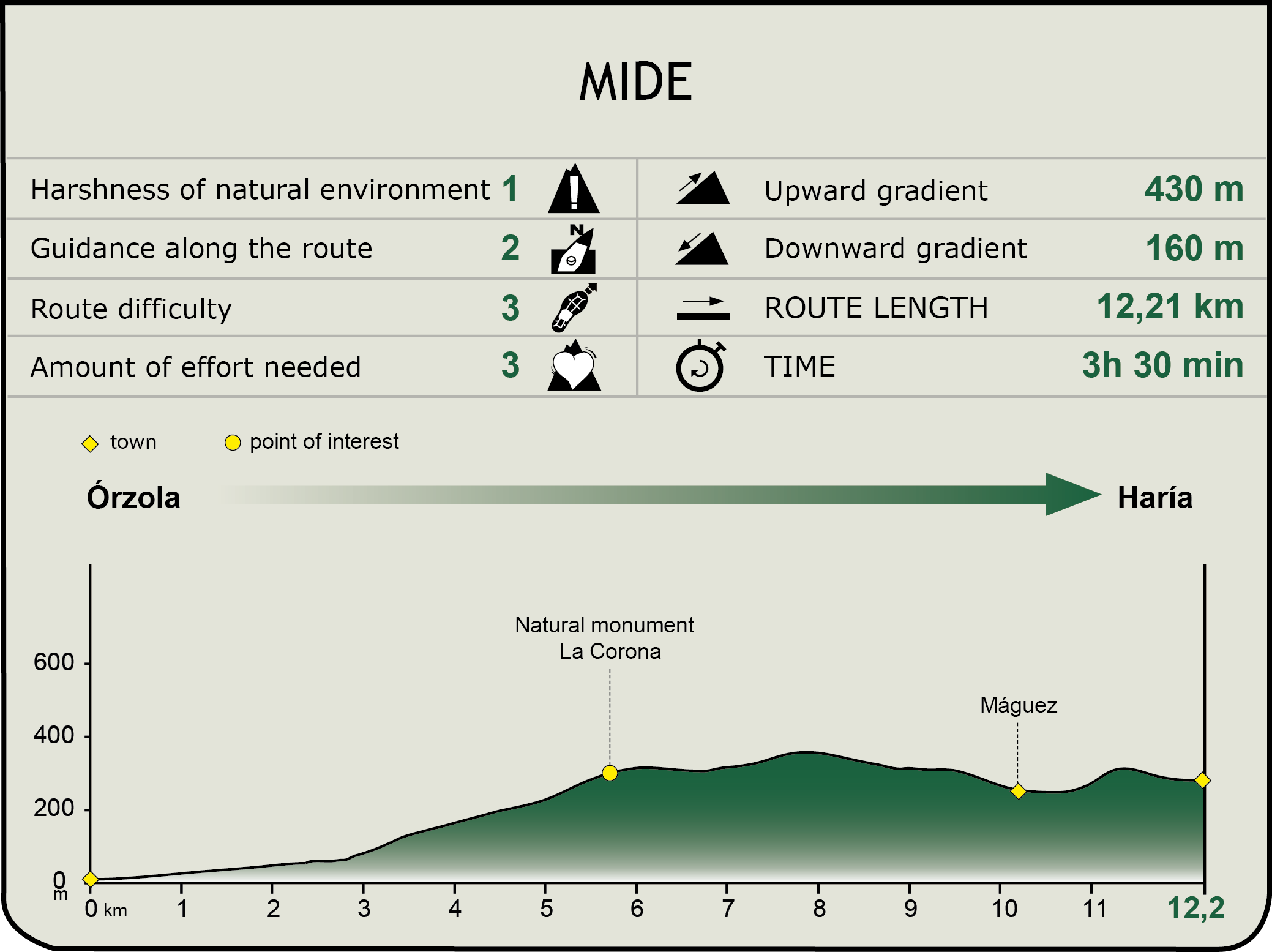
MIDE (Method for the Information of Excursions)
Featured
Further information
Puerto de Órzola
Puerto de Órzola is a port in the north of Lanzarote island, with the namesake town belonging to the municipality of Haría. This port is the communication point between this island and the La Graciosa island. There are a lot of travellers, most of them tourists. Shortly after leaving the sheltered waters of the port behind, the trail takes the traveller to Archipiélago Chinijo Natural Park, with a surface over 9,000 hectares. This Natural Park includes La Graciosa island and the north islets, in addition to almost the whole northern area of Lanzarote island, including the plains of El Jable and the cliffs of Famara.
Natural Monument of La Corona
This is a Protected Natural Area with around 1,800 hectares, located in the municipality of Haría, on Lanzarote island. It was classified as a Natural Park as per Act 12/1987, of 19 June and reclassified as Natural Monument of La Corona according to Act 12/1996, of 19 December. The main feature of this Natural Park is the volcano of La Corona. The volcano, together with its badlands and the farming private properties of the area, has a high geomorphological importance and offers stunning landscapes.